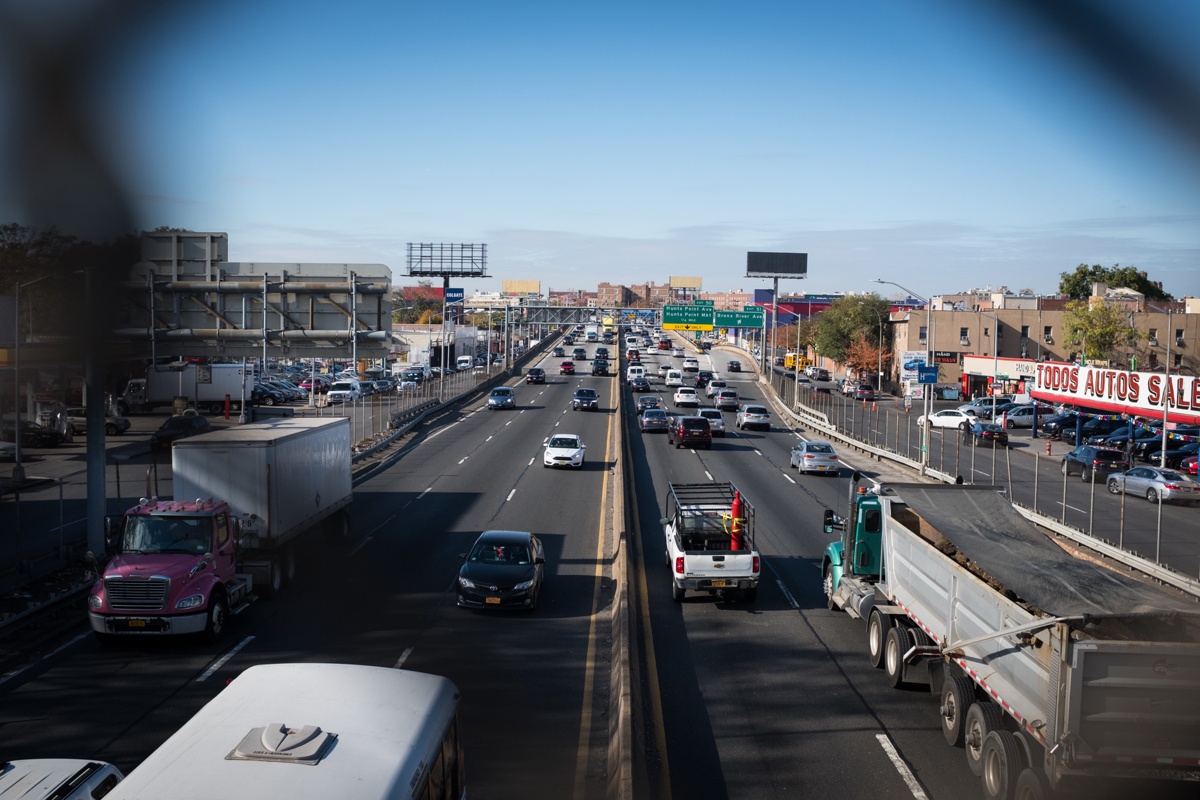Efforts to reduce air pollution should focus on neighborhoods with the worst health impacts

This story was recently updated with new data.
Every year in NYC between 2017 and 2019 (The most recent data available. See all recorded years of health impacts data here), fine particulate matter pollution from motor vehicles and burning fossil fuels caused:
- At least 1,800 deaths
- About 900 hospital admissions for lung and heart conditions
- 3,100 emergency department admissions for asthma
Since air pollution causes significant illness and death in New York City, it’s important to reduce air pollution. So where do we start?
The New York City Community Air Survey, an extensive air quality monitoring program, lets us understand neighborhood-by-neighborhood differences in air quality and pinpoint neighborhoods with the worst air quality.
You might think it would make sense to focus our efforts to reduce air pollution on these neighborhoods where air quality is the worst. But prioritizing only neighborhoods with the worst air pollution for air quality improvements won’t get the most public health benefits. Simply put, the worst health outcomes from air pollution don’t happen where the air quality is the worst.
In cities across the USA, there’s a clear pattern: the worst air quality tends to be in the poorest neighborhoods. But through NYCCAS, we’ve found that New York City is different: our most polluted neighborhoods, in Midtown and Lower Manhattan, are among the wealthiest in the city. But kids and adults living in high-poverty neighborhoods experience more air pollution-related health problems.
Using health impact assessments to make bigger improvements
We can use data modelling tools to predict which policies to improve air quality would yield the greatest public health benefit. This type of analysis is called a health impact assessment.
A recent health impact assessment estimates the effects of reducing 80% of greenhouse gas emissions by 2050, a policy called “80 x 50.” This policy would reduce fine particulate matter (also called PM2.5) throughout the city, regardless of neighborhood poverty level:
But, despite similar improvements in air quality, high poverty neighborhoods would have much greater health benefits. Simply put, efforts to improve air quality have the most health impact in high-poverty neighborhoods.
That means that local efforts to improve air pollution – like reducing truck traffic, or providing incentives for buildings to convert to cleaner heating oil – should focus on neighborhoods with the highest poverty, not the ones with the worst air pollution.
Address air pollution where health outcomes are the worst.
Of course, it’s important to understand what parts of our city have the worst air pollution. And then we must look deeper at the patterns of air quality-related health outcomes. When we do, we find that focusing on high-poverty neighborhoods is the right thing to do.
High-poverty neighborhoods tend to have higher baseline rates of many health conditions, including those associated with air pollution—so people living in these neighborhoods are more likely to have existing health problems that are worsened by air pollution.
Second, many residents of high-poverty neighborhoods have fewer resources, including lower-quality housing, less access to health care, and less money. All of which means they are less able to protect themselves from pollution’s harmful effects.
Poverty is created by current and historical racist practices, like redlining, that deprive people and communities of resources and harm people’s health. Like all cities across the United States, NYC has been home to racist policies for centuries, and people of color (especially those who are Black and Latino) living in New York still experience their harmful effects acutely. The Health Department has declared racism a public health crisis.
Systemic inequities can’t be undone quickly or easily, but they also are not inevitable. By focusing on improving air quality where its public health impacts are the greatest, we take one critical step toward environmental justice.
Edwin J. Torres/Mayoral Photography Office, City of New York
Published on:
December 15, 2022